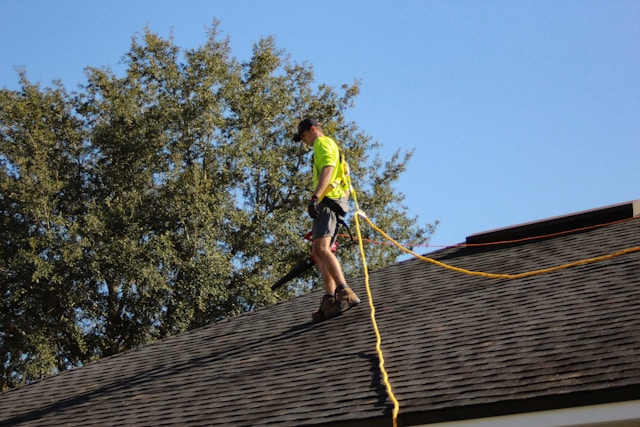Key Takeaways:
- Comprehensive roof maintenance is critical to prolonging its lifespan and integrity.
- Timely identification and repair of roof damage prevent extensive and costly repairs.
- Suitable materials and professional guidance are essential to a successful roofing project.
- Environmental and weather factors should be considered in roofing choices.
- Understanding insurance coverage and claims can alleviate financial stress in the event of roof damage.
- Emerging trends in the roofing industry promise better, more sustainable living environments.
Table of Contents:
- Introduction to Roofing Essentials
- Regular Roof Maintenance: A Staple for Longevity
- Roof Repair: Identifying and Addressing Damage
- When to Consider a Roof Replacement
- Materials Matter: Choosing the Right Roofing for Your Home
- The Impact of Weather on Roofing Systems
- The Environmental Aspect of Roofing Choices
Introduction to Roofing Essentials
Your roof is more than just the top layer of your home. It’s a complex system designed to protect, insulate, and sustain itself through diverse weather conditions. Understanding essential roofing principles sets you on the right path to maintaining a secure and long-lasting protective shield over your home. Crucial aspects, such as knowing when it’s time for a new roof San Antonio and recognizing the warning signs that your roof might fail, are vital in avoiding the consequences of overlooked roofing issues.
Regular Roof Maintenance: A Staple for Longevity
Routine maintenance is the key to detecting potential issues early and extending the overall lifespan of your roof. It includes biannual inspections, preferably in the spring and fall, to ensure your home is prepared for the seasonal changes. Homeowners should incorporate gutter cleaning, debris removal, and the inspection of roofing materials as part of their regular maintenance. These actions can reveal minor issues, such as lifting or missing shingles, which can be addressed before developing into significant problems, ultimately saving time and money.
Roof Repair: Identifying and Addressing Damage
Some signs of roof damage are unmistakable, like extensive leaking or large missing roofing sections. However, others are more subtle and require vigilance to identify. For instance, sagging areas, missing granules on asphalt shingles, or even an unexpected rise in energy bills can signify roofing issues. Addressing these early indicators can prevent damage from worsening, ensuring your home remains structurally sound and insulated against the elements.
When to Consider a Roof Replacement
A roof replacement is a significant investment and one that’s often made out of necessity rather than choice. Critical factors that necessitate a replacement include:
- Extensive wear and tear.
- Major structural damage.
- Cases where repairs would be merely a short-term solution to a bigger problem.
An expert opinion can help decide whether minor repairs will suffice or if investing in a new roof is the right long-term decision for your home and safety.
Materials Matter: Choosing the Right Roofing for Your Home
Choosing appropriate roofing materials is influenced by several factors, including aesthetics, cost, durability, and climatic conditions. Each material, from classic asphalt shingles to modern metal roofing, serves a different need and has its benefits and limitations. For example, while asphalt shingles may be cost-effective, metal roofing can offer superior durability and energy efficiency, making it a popular choice for regions with harsh climates.
The Impact of Weather on Roofing Systems
Severe weather(high winds, heavy rain, scorching sun, or freezing temperatures)can inflict stress on roofing materials. As discussed, different materials respond uniquely to environmental challenges. Correctly understanding these responses helps select materials that best withstand local weather conditions.
The Environmental Aspect of Roofing Choices
In recent years, environmental sustainability has become a crucial aspect of building and renovating homes, extending to roofing. By choosing green roofing materials and designs, homeowners reduce their ecological footprint and enjoy the perks of a more energy-efficient and potentially cost-saving roofing system.




